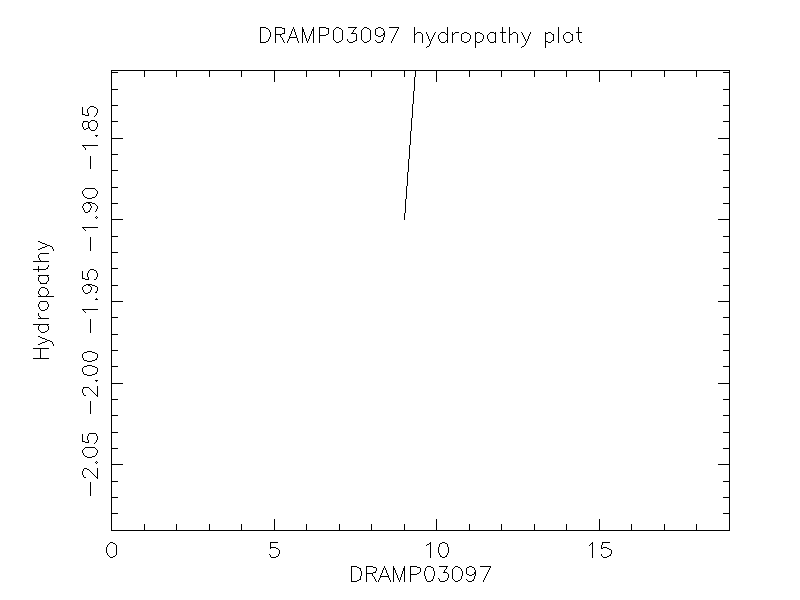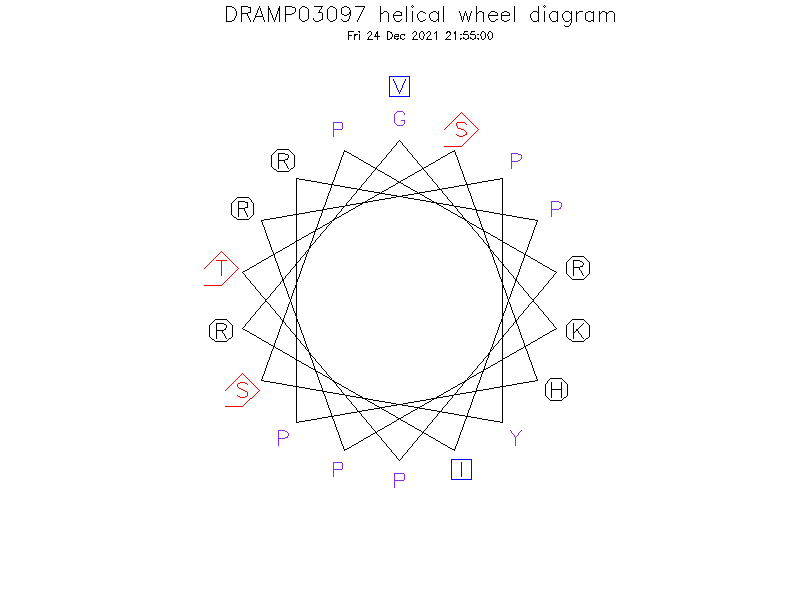General Information
-
DRAMP ID
- DRAMP03097
-
Peptide Name
- Drosocin (Glycopeptide,insects, arthropods, invertebrates, animals)
-
Source
- Drosophila melanogaster (Fruit fly)
-
Family
- Belongs to the drosocin family
-
Gene
- Dro
-
Sequence
- GKPRPYSPRPTSHPRPIRV
-
Sequence Length
- 19
-
UniProt Entry
- P36193
-
Protein Existence
- Protein level
Activity Information
-
Biological Activity
- Antimicrobial, Antibacterial, Anti-Gram-
-
Target Organism
- No MICs found in DRAMP database
-
Hemolytic Activity
-
- No hemolysis information or data found in the reference(s) presented in this entry
-
Cytotoxicity
-
- Not included yet
-
Binding Target
- Not found
Structure Information
-
Linear/Cyclic
- Not included yet
-
N-terminal Modification
- Not included yet
-
C-terminal Modification
- Not included yet
-
Nonterminal Modifications and Unusual Amino Acids
- Not included yet
-
Stereochemistry
- Not included yet
-
Structure
- Beta turns
-
Structure Description
- The NMR data clearly indicate a difference between the glycosylated and nonglycosylated forms, i.e., in the perturbation of a turn directly adjacent to the glycosylation site.
-
Helical Wheel Diagram
-
PDB ID
- 4EZR resolved by X-ray.
-
Predicted Structure
- There is no predicted structure for DRAMP03097.
Physicochemical Information
-
Formula
- C98H160N34O24
Absent Amino Acids
- ACDEFLMNQW
Common Amino Acids
- P
Mass
- 2198.56
PI
- 12.01
Basic Residues
- 6
Acidic Residues
- 0
Hydrophobic Residues
- 2
Net Charge
- +6
-
Boman Index
- -69.5
Hydrophobicity
- -1.579
Aliphatic Index
- 35.79
Half Life
-
- Mammalian:30 hour
- Yeast:>20 hour
- E.coli:>10 hour
Extinction Coefficient Cystines
- 1490
Absorbance 280nm
- 82.78
Polar Residues
- 5
DRAMP03097

Comments Information
Function
- Antibacterial peptide with strong anti-Gram-negative bacteria activity.
PTM
- O-glycosylation is essential for full biological activity.
Tissue specificity
- In hemolymph 6 hours after immune challenge, levels of expression increase for first 24 hours and persist for the following two weeks.
Developmental stage
- Expressed in larvae and in adults.
Induction
- By bacterial infection.
Literature Information
- ·Literature 1
-
Title
- Conformational studies by NMR of the antimicrobial peptide, drosocin, and its non-glycosylated derivative: effects of glycosylation on solution conformation.
-
Pubmed ID
- 9888811
-
Reference
- Biochemistry. 1999 Jan 12;38(2):705-14.
-
Author
- McManus AM, Otvos L Jr, Hoffmann R, Craik DJ.
- ·Literature 2
-
Title
- A novel inducible antibacterial peptide of Drosophila carries an O-glycosylated substitution.
-
Pubmed ID
- 8325867
-
Reference
- J Biol Chem. 1993 Jul 15;268(20):14893-7.
-
Author
- Bulet P, Dimarcq JL, Hetru C, Lagueux M, Charlet M, Hegy G, Van Dorsselaer A, Hoffmann JA.
- ·Literature 3
-
Title
- Isolation from an ant Myrmecia gulosa of two inducible O-glycosylated proline-rich antibacterial peptides.
-
Pubmed ID
- 9497332
-
Reference
- J Biol Chem. 1998 Mar 13;273(11):6139-6143.
-
Author
- Mackintosh JA, Veal DA, Beattie AJ, Gooley AA.

